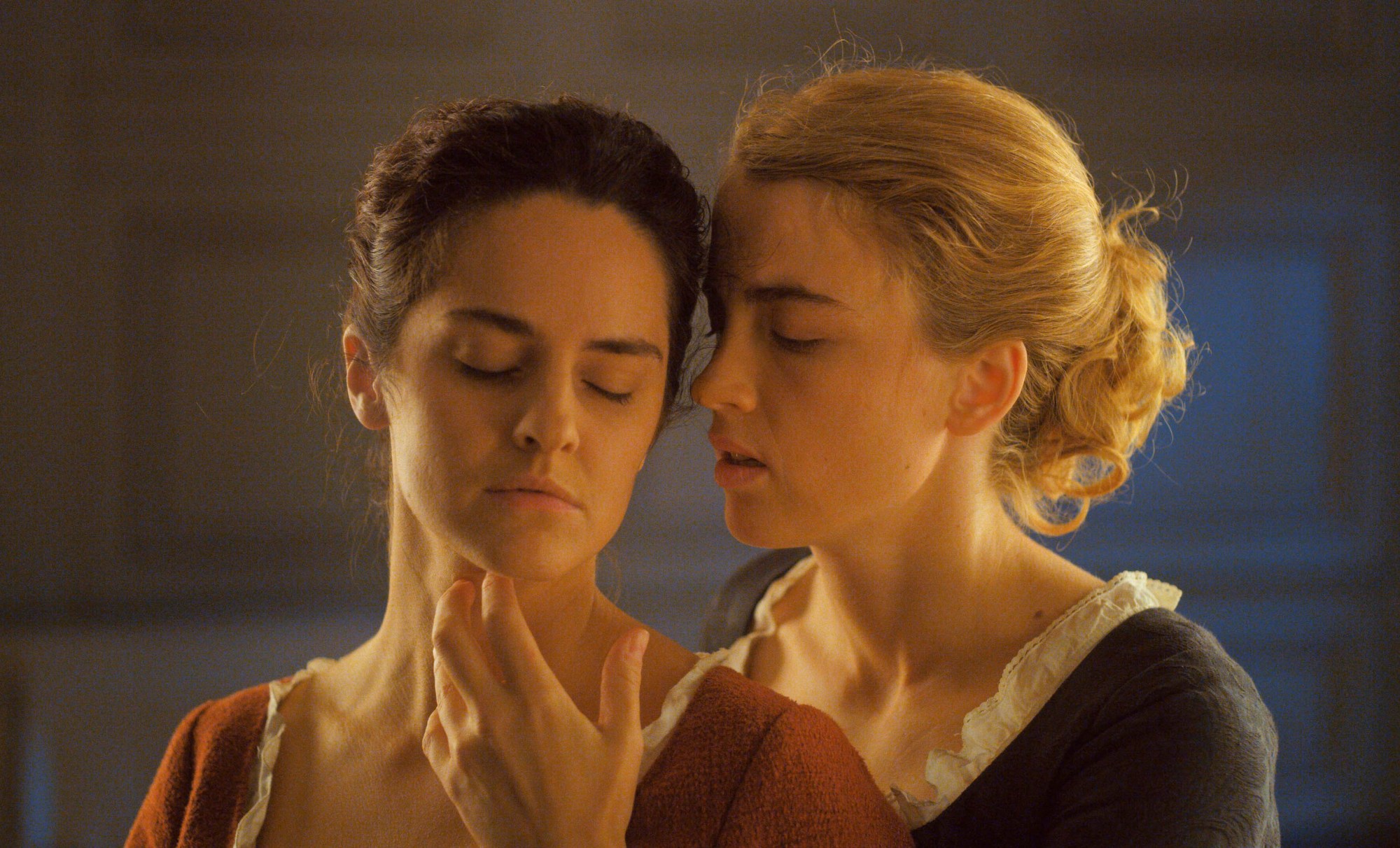
- Golden Globe Awards
Portrait of a Lady on Fire (France)
Set in 1770 Brittany, on the northern coast of France, Portrait of a Lady on Fire (Portrait de la jeune fille en feu), written and directed by Céline Sciamma, is a delicate love story between two young women. Marianne is an artist who learned to paint from her father (in a time when women were not allowed into art schools). When a student asks her about her portrait of a woman with her dress on fire, she remembers what inspired it.An Italian countess (Valeria Golino) had hired Marianne (Noémie Merlant) to paint her daughter’s portrait, to be sent to her betrothed in Milan. But she is to pretend to be a lady companion and paint Héloïse (Adèle Haenel) from memory, because the innocent girl, just released from a convent, has not agreed to the wedding. During daily walks by the sea bluffs, the two girls study each other. After Marianne reveals her purpose, her subject agrees to pose, and that’s when they fall in love.It was the intention of this feminist director to portray a collaboration between the painter and the model, where they both contribute to the final portrait, and to depict a lesbian love story from a female point of view. Sciamma co-wrote the stop motion animated movie My Life as a Zucchini (Ma Vie de Courgette), nominated for a Golden Globe in 2017. She has directed three features: Water Lilies (2007), Tomboy (2011) and Girlhood (2014).She told HFPA journalists: “I wanted my characters to embrace the journey and not be impressed by the fact that it was a period piece, I was obsessed with the restitution of the hearts, the bodies, the souls, the fire. The strong departure for me was telling the story of grown women for the first time, and with professional actresses; so politically you share the film with them, there is this strong collaboration in a dialogue around love and the creation of art. These two actresses had this great cinematic contrast, the blonde and the brunette, but they were the same age, the same height, and there was no domination whatsoever between them. When I looked at them both in the frame, I felt a new sensation. I am always looking for new images, new politics, a new imaginary, maybe that’s how my feminism influences my work. The movie is a manifesto because as women we are getting more radical, more generous and more joyful. We made this political moment happen in France, inspired by #MeToo and #TimesUp, it’s called 50/50, we actually created this political community, this sorority. So, there has been a new rise of feminism in the industry.”

